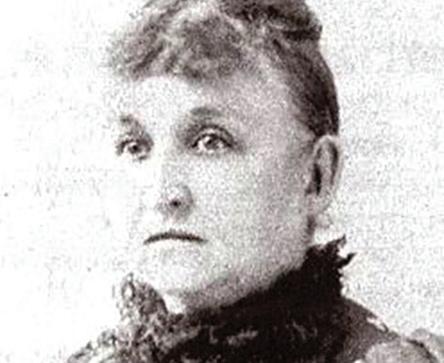
4 minute read
Ordaining Anna Hanscome
The Woman’s Column, published in Boston, was “devoted to Women’s Interests, and especially to Woman Suffrage.” Tucked among reports about the Mississippi Valley Suffrage Conference, how to order woman’s suffrage tracts, and stories of women assuming traditionally male roles, the paper carried an unusual notice in April 1892.
“At a council of ordination held in the Mission Church Hall at Malden, Mass., on March 30, it was unanimously voted to ordain Mrs. Anna S. Hanscome as pastor of the Mission Church. The ordination services were held at the same place in the afternoon.”(1)
Women’s ordination was not unknown to Alice Stone Blackwell, the paper’s editor. The Congregational Church had ordained her aunt, Antoinette Brown Blackwell, in 1853.
But the Mission Church was a Wesleyan-holiness congregation, and Hanscome was ordained by the oldest Nazarene parent-body, the Central Evangelical Holiness Association.(2)
Anna Sarah Smith(3) was the oldest child of Isaac and Mary Smith. Born in 1845, Anna was raised in a Christian home and decided early to follow Jesus. At 15, she joined a Congregational church but later became a Methodist.
She married George Hanscome, a blacksmith, in 1868. They moved to Malden around 1872. She kept the home. A dressmaker boarded with them.(4) Anna undertook charitable work through church, the Woman’s Christian Temperance Union, and helped wayward girls, some of whom she led to Christ.
George died of consumption in 1886. According to a contemporary, Anna’s widowed state enabled her to undertake the ministry that followed. She participated in a weekly woman’s prayer group similar to Phoebe Palmer’s Tuesday Meeting for the Promotion of Holiness. Hanscome became the group’s leader.
This group was the nucleus of a church organized in August 1890. Anna was called to be its pastor but was not ordained, so she was named assistant pastor and a non-resident minister was a supervising pastor for the next two years.
New England was a holiness movement stronghold. From Boston, Rev. Timothy Merritt had published The Guide to Christian Perfection, the Wesleyan-holiness movement’s vanguard publication since the 1830s. Malden’s Mission Church was among a dozen holiness congregations organized in New England between 1887 and 1891. The Central Evangelical Holiness Association (CEHA), organized in 1890, united churches in New Hampshire, Vermont, Massachusetts, and Rhode Island.
In 1892, Rev. C. Howard Davis appointed a council of ministers and laypeople to examine Hanscome’s theology, Christian experience, and call to ministry. Upon their recommendation, she was ordained during the CEHA’s annual meeting, with Rev. E. B. Pike preaching the ordination sermon, Rev. W. C. Ryder praying “the ordaining prayer,” and Rev. Fred Hillary giving the charge.
For Anna, the next years were filled with the regular round of pastoral work: 182 calls in 1892, seekers saved and sanctified, several fast days each year, believers baptized at Wakefield Pond, Sunday school picnics, and a lot purchased at Walnut and Eighth Street. At the close of 1894, Anna reported “the Church in a better spiritual condition than the preceding [years].”
That was her last report. Anna developed sepsis and died at age 50. She was buried in Exeter, NH, beside her husband and near her parents.
Her obituary in Beulah Christian, presumably written by Fred Hillary, stated that “Sister Hanscome was a good preacher, and was clear in the doctrine and experience of Scriptural Holiness, and led many into the blessing... She was a faithful and exemplary pastor. She guided her flock away from fanatical errors... A live, earnest, intelligent, holy and united membership is a living monument to her memory.”(5)
Other women in the Nazarene lineage would be ordained: Mary Cagle and Elliott Sheeks in Tennessee in 1899, Elsie Wallace in Spokane, WA, in 1902, and many others. But Anna Hanscome was the first.
A theology of ministry that empowered female preachers was part of the Nazarene DNA and helped bring together the denominations that united to form the Pentecostal Nazarenes in 1907 and 1908.
Dr. Stan Ingersol, Ph.D., is a church historian and former manager of the Nazarene Archives.
1 The Woman’s Column (April 9, 1892): 4.
2 Antoinette Brown is considered to be the first woman ordained to the ministry in the United States. The ordination sermon was preached by Rev. Luther Lee, a co-founder of the Wesleyan Methodist Church.
3 Anna was also called Annie.
4 Massachusetts Census Records, 1880.
5 Beulah Christian (April 1895): 2.







